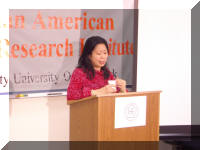During the little over one hundred years from its opening as a treaty port to the Communist revolution, Shanghai vividly epitomized China’s economic drive and vitality. Today, as during in its pre-war heyday, the metropolis is not only China’s leading commercial, financial and industrial center but China’s most stylish city, and trend-setter in fashion, art and ideas.
In short, Shanghai has re-embraced its capitalistic identity with a vengeance. The Whangpu metropolis, know by such epithets as “The Paris of the East” and “The Whore of Asia” earlier in the twentieth century, has come full circle. What does Shanghai of yesterday have to tell us about Shanghai of today?
Stella Dong, author of “Shanghai: The Rise and Fall of a Decadent City,” (HarperCollins Publishers) will present an overview of this unique metropolis starting with its modern beginnings in 1842 as a treat port and funnel for the British opium trade in China and ending with the Communist triumph in 1949.



